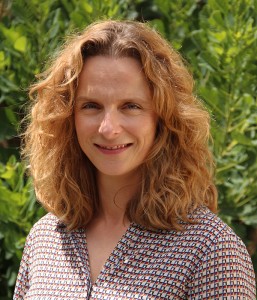Written by Paige Beuhler and Ines Hanrahan – December 2024.
In December of 2024, the WA Tree Fruit Research Commission approved $342,631 for five (5) new technology research projects for the upcoming year.
2025 New Technology Project Details:
Project Title: The Next Fruit 4.0 (Follow-Up)
Organization (s): Wageningen University and Research
PI (s): de Jong, P. F.
Total Funding Amount for All Years: $54,000
Length: 1 Year
The former project Fruit 4.0 and the last 3 years of Next Fruit 4.0 have shown what can be reached in fruit production by using sensors, applying data management and developing precision machines. Important steps have been made towards precision spraying and camera technology, forming an important basis for future orchard activities. In the final year of the Next Fruit 4.0, the goal is to finish work. The expected accomplishments in 2025 are a validated prototype precision sprayer for several fruit crops, a validated and functional prototype end effector for pruning and harvesting, validated sensors and algorithms to collect physiological and phytopathological characteristics of apple and pear, a validated decision model developed on the basis of collected data and expert knowledge, ready to use non-destructive cameras and sensors to determine fruit quality of pear, and an overview of tests to show efficacy of precision fruit thinning.
Project Title: Dutch & American Tech in Action: Sensor-Driven Precision Spray
Organization (s): innov8.ag, Aurea Imaging, Washington State University
PI (s): Mantle, S., Hazelhoff, J., Hoheisel, G., Khot, L.
Total Funding Amount for All Years: $149,850
Length: 2 Years
The Orchard of the Future collaboration between Washington State and the Netherlands is an eye-opener in terms of opportunities to bring the best of Dutch & US technologies and approaches together, to improve Washington grower productivity & profitability over the mid-term. The success of AgTech innovation in Washington hinges on the ability to transition from niche innovations to widespread adoption by mainstream end users. This process depends on two key variables: execution (data to action) and integration. Execution involves the extent to which data and crop intelligence directly drive automated crop management and farm tasks. Integration refers to hardware and software architecture that enables adoption and integration with large industrial entities, such as tractor manufacturers. The TreeScout, developed by Aurea Imaging, offers a single, integrated tool for all orchard monitoring and agronomy needs. In contrast, the existing ecosystem generally provides external services that limit grower autonomy, focus primarily on data rather than actions, lack original equipment manufacturer machine integration, and generally do not operate on an individual tree level but rather on a square meter or image level. The outcome of this project would bring a seamless approach to mainstream orchard growers as a result of the deep collaboration between researchers, collaborators, commercial apple growers, and a progressive AgChem retailer.
Objectives:
- Deploy and validate orchard canopy monitoring/agronomy technology across two orchard setups, integrating tractor, RTK (real-time kinematic) GPS, tree-level sprayer, and Treescout for chemical applications, including blossom thinning and vigor control.
- Optimize chemical and mechanical growth regulation using precision agriculture techniques to improve yield and minimize input costs.
- Collaborate with key partners, including Burrows + CNH/Raven, Aurea, growers, and agronomy/chemical providers (e.g., Wilbur Ellis, GS Long, Nutrien) to ensure seamless technology adoption and application execution.
- Demonstrate the full data integration pipeline, from collection through execution, to enhance orchard management practices and support future scalability across other varieties and regions.
- Educate growers (front-line, managers, owners) on the why & how of this integrated approach, including hands-on education sessions in collab with WSU Extension.
Project Title: Stem Clipping for Automated Harvest
Organization (s): Advanced Farm Technologies, Inc.
PI (s): Corsetto, M., Phimmasehn, A., Cobb, K.
Total Funding Amount for All Years: $250,000
Length: 2 Years
With support from industry partners and the Washington Tree Fruit Research Commission, Advanced Farm Technologies started developing an automated apple harvester in 2021. After basic field studies in 2021, the robots picked their first apple in the 2022 season and have since picked hundreds of thousands of apples in Washington. For the first time ever, robotic apple harvest now seems within reach. However, when the robots pick apples of varieties that require stem clipping, this task is performed by a human standing on the machine. This is not a sustainable approach long term as the industry aims to reduce costs and scale operations. After studying precedents, few, if any, tools exist to automate stem clipping. The task is mostly performed with basic scissors in the field as part of manual harvest. The project aims to develop a stem clipping mechanism that would enable automated harvesting in line with the timelines expected for commercial release of the robotic harvester overall.
The benefits and goals of this project include:
- The ability for a robotic harvester to pick more varieties of apples without the need of an operator on a machine. Robots are now picking so fast that a single person cannot keep up with the workflow of one machine. Unit economics studies show that automated picking will need to remove the person entirely from a machine to scale operations cost effectively.
- Improving the quality and value of the packout, both directly and indirectly: by removing stems, this will directly reduce the puncture and bruising damage in a bin. Automated stem removal will also open new opportunities for in-field cull sorting, especially if the stem removal is coupled with a vision system (which may itself be a part of the mechanism).
Project Title: Training Vision Systems to Detect Little Cherry Disease in Orchards
Organization (s): Orchard Robotics, Washington State University
PI (s): Wu, C., Harper, S.
Total Funding Amount for All Years: $69,635
Length: 2 Years
Removing trees infected with Little Cherry Disease (LCD) pathogens is the most important step to reduce LCD transmission to healthy trees. However, the time window for accurately observing symptoms can be just two to five days before harvest. In addition, trained crews are needed to reliably identify symptoms. Thus, the most basic first step of managing the spread of LCD in established orchards becomes a logistical nightmare with unachievable acreage to cover and accurate records impossible to maintain. Using advanced AI and computer vision algorithms, Orchard Robotics’ Orchard Vision System images trees in cherry orchards and processes the resulting data to identify characteristics and properties about individual cherries and the entire cherry tree. New “LCD detection statistical machine learning models” would differ from the foundational computer vision machine learning models that are used to detect and size individual fruits. While the latter are trained to look at images to identify and size cherries, the former can be trained on a vast amount of higher-level cherry data (e.g. the values and distributions of fruit size and color per tree) to predict when a tree may show LCD symptoms. One advantage of Orchard Vision Systems is that a large amount of precise data can be collected in a relatively short period of time, when compared to traditional methods of sampling and data collection, such as manual hand counts and caliper sizing. The ability to quickly obtain a large sample size of data is helpful in many ways, especially when developing machine learning models capable of predicting the presence of LCD symptoms. The intended result is a tool growers can use to more quickly and reliably capture cherry size and color distribution within the tree. This would reduce time by focusing on scouting and sampling where it’s most needed and aid growers in seamlessly developing reliable maps without human error. Visualizing the spread of disease by accounting for removed trees and trees with symptoms, growers would gain confidence in determining the best management plan for tree removal and replant strategies.
Project Title: New Strategies for Precision Plant Nutrient Application
Organization (s): Washington State University, Outfield Technologies
PI (s): Sallato, B., Khot, L., McDougall, J.
Total Funding Amount for All Years: $64,979
Length: 3 Years
In an analysis conducted in 2018 by Sallato, growers indicated that the traditional methods of soil testing and tissue testing are not broadly utilized, because there is a lack of correlation between the test and the crop growth, yield and quality. Consequently, many companies, services and growers are searching for new methods and technology that can better predict nutrient status in the plant. This project aims to continue exploring new testing methods and orchard mapping technology to develop smart nutrient management programs and consequently, maximize productivity and fruit quality. The team plans to continue providing growers with comparative and unbiased information on mapping, soil and plant nutrient methods, as well as providing access and information for new companies to expose and validate their technology to serve the tree fruit industry.
Objectives:
- Validate tools to determine precision and variable nutrient demand.
- Integrate layers of information to create prescription mapping for different nutrient requirements.
- Evaluate the impact of variable rate nutrient management.
Contact:
Paige Beuhler (Administrative Officer): paigeb@treefruitresearch.com, 509 665 8271 ext. 2
Ines Hanrahan (Executive Director): hanrahan@treefruitresearch.com; 509 669 0267
Fruit Matters articles may only be republished with prior author permission © Washington State University. Reprint articles with permission must include the following: Originally published by Washington State Tree Fruit Extension Fruit Matters at treefruit.wsu.edu and a link to the original article.


